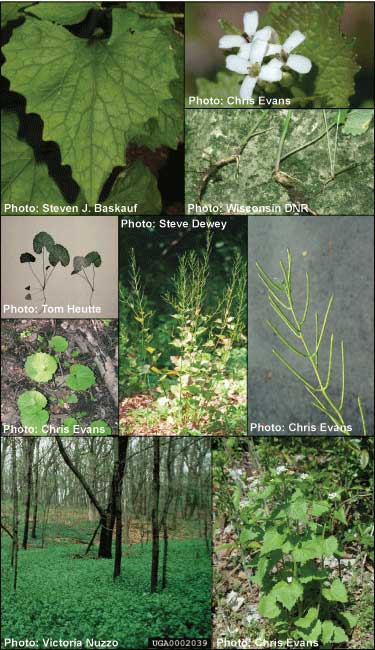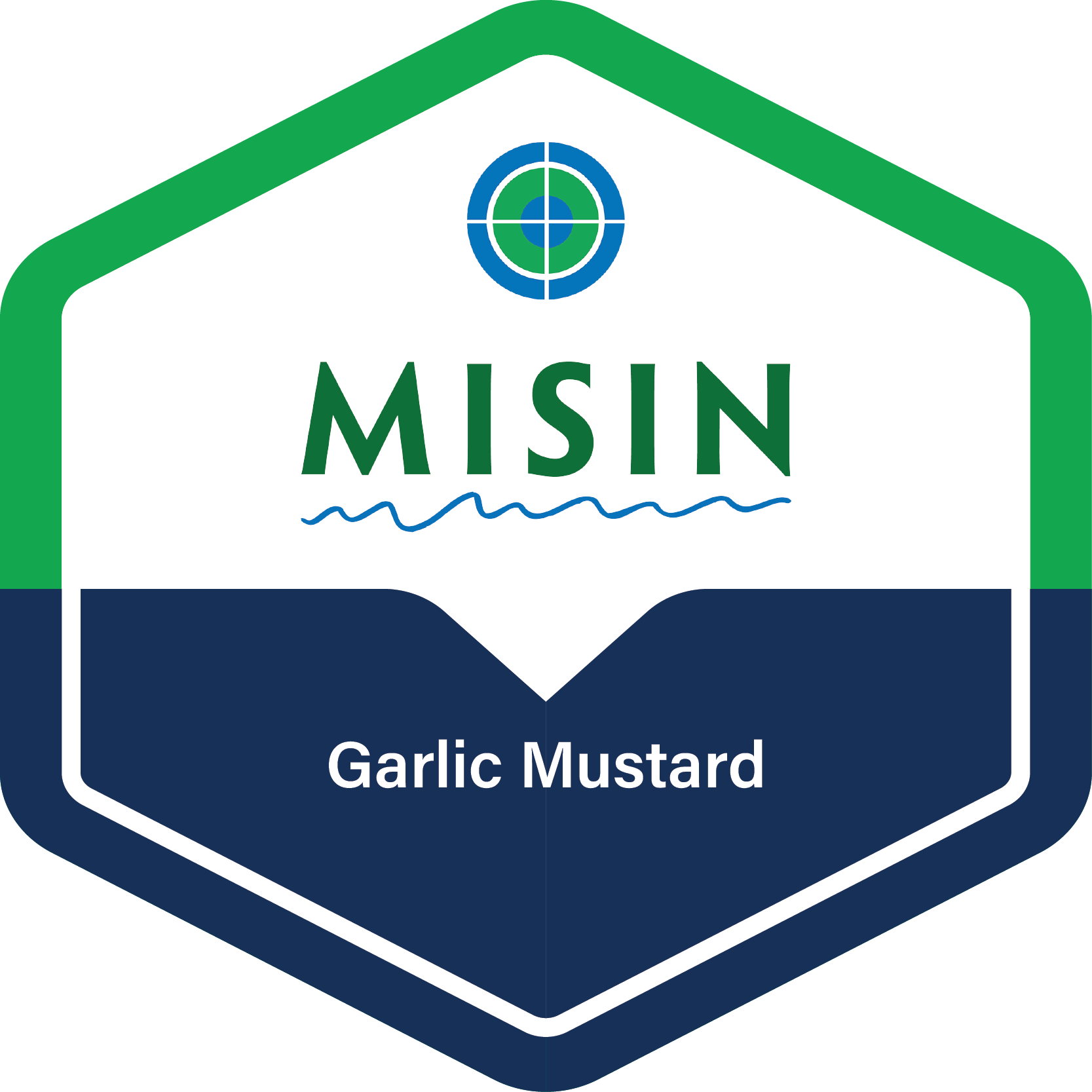Garlic mustard (Alliaria petiolata)
 Synonyms: Alliaria alliaria, Alliaria officinalis, Erysimum alliaria, Sisymbrium alliaria
Synonyms: Alliaria alliaria, Alliaria officinalis, Erysimum alliaria, Sisymbrium alliariaCommon Names: Mustard root, garlic root, garlicwort
Description: All parts smell like garlic when crushed, especially in spring and early summer; dominates the ground layer of forests to the exclusion of almost all other herbaceous species; destroys mycorrhizal fungi needed by woody plants for regeneration.
Habit: Upright, herbaceous biennial growing up to 1 m (3 ft) tall.
Leaves: Simple, alternate, triangular, toothed, lower leaves rounded with cordate bases and palmate venation, up to 12 cm (4.75 in) long, scalloped edges, arranged in a basal rosette, upper leaves stalked.
Stems: Up to about 1 m (3 ft); typically one flowering stem per rosette but may be more.
Flowers: Numerous, small, white in color, 4 petals, usually in clusters at tops of stalks or in leaf axils; bloom late April through early June.
Fruit and seeds: Small, dark brown/black; in long narrow capsules; one plant can produce up to 3,000 seeds; seeds viable within a few days of flowering and remain viable for many years.
Habitat: Found in upland and floodplain forests, savannas, along trails, roadsides and disturbed areas; shade tolerant but also found in full sun; spreads rapidly.
Reproduction: Prolific seeding, preferentially outcrosses but may self; produces basal rosette the first year, flowers the second year.
Similar species: Basal leaves resemble those of golden alexanders (Zizia aurea), ragworts (Senecio spp.), violets (Viola spp.) and buttercups (Ranunculus spp.); fruiting structures similar to other mustards; can be distinguished by garlic odor when crushed.
Monitoring and rapid response: Monitor forest edges, paths and floodplains. Begin control efforts in highest quality areas; pull seedlings when there only a few - otherwise, focus on second year plants. Pull plants before seed is produced. Remove upper half of root or it may resprout. Tamp soil thoroughly to minimize recolonization and germination. Flower/seed heads must burned or placed in a landfill to prevent seed development. Herbicide can be used in early spring and fall, while native plants are dormant. Continue control efforts until the seed bank is depleted. This species is difficult to control, research control options thoroughly. Credits: The Michigan Natural Features Inventory (MNFI) has partnered with MISIN to provide the information in this fact sheet. Species images and/or information were used with permission from "A Field Identification Guide to Invasive Plants in Michigan's Natural Communities" and "A Field Guide to Invasive Plants of Aquatic and Wetland Habitats for Michigan.
Common Name: | Garlic mustard |
Scientific Name: | Alliaria petiolata |
Family: | Brassicaceae (Mustard) |
Duration: | Annual, Biennial |
Habit: | Herbs |
USDA Symbol: | ALPE4 |
 View Species Course |
|
